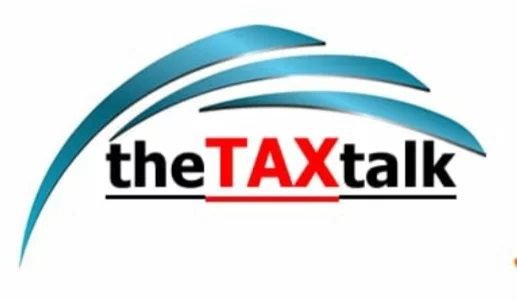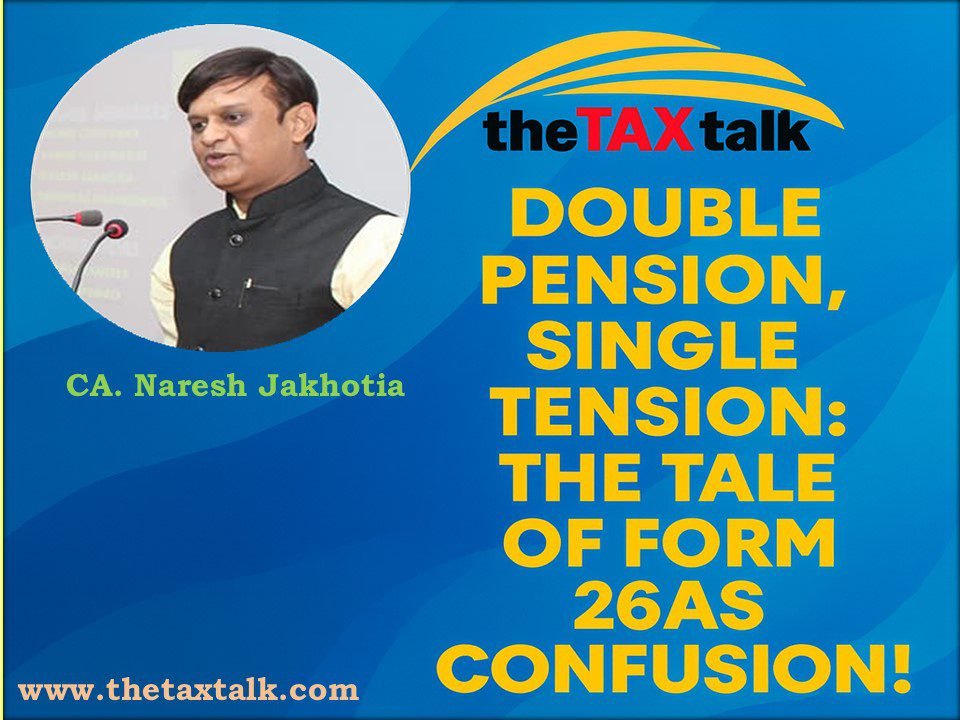![]()
Double Pension, Single Tension: The Tale of Form 26AS Confusion!
[Query 1]
I retired on 31st Jan 2024 and up to 31st March 2025, only 14 months pension is received by me. SBI has included a 15 months pension in 26AS of A.Y. 2025-26. How to get it corrected? Concerned local branch says it is done centrally and they can’t help in this regard. Another issue is – Pension amount for Feb 24 and March 24 was received on May-24 and the same was accounted for in A.Y. 2024-25 and tax paid accordingly last year. How to adjust this amount this FY? [Subhash Swami – scswami@gmail.com]
Reply:
Retirement, they say, is the time to relax – sip tea, not tally sheets! But peace vanishes the moment a pensioner opens Form 26AS and finds that the pension received once is showing up twice. One such reader is facing this “double pension without double payment” problem. Let’s decode this double-entry drama.
1. When Form 26AS Starts Playing ‘Repeat Telecast’:
SBI and other banks disburse pension through Centralized Pension Processing Centers (CPPCs). When payments are delayed – like February and March 2024 being credited in May 2024, the TDS is reported in the quarter when payment is made, i.e., FY 2024–25.
So, even though the income belongs to FY 2023–24, it gets reflected in Form 26AS for FY 2024–25, giving the illusion of an extra month’s pension. This is not your mistake – it’s a timing mismatch between payment and reporting. The system repeats your pension story even when your bank balance doesn’t!
2. Option One – The Ideal, almost impossible Dream (Ask the Bank for a Correction):
Write to the Bank’s CPC team and get it corrected. If it happens so, the issue would get resolved once for all.
3. Option Two – The Expensive Shortcut (Pay Twice, File Easy):
If the bank’s central processing team doesn’t respond (which, let’s be honest, is most often the case), the easy approach could be:
• Show entire pension income received in FY 2024–25.
• Claim TDS as it appears in Form 26AS (even if it covers 14 months).
You’ll end up paying tax twice. It’s the ‘buy peace of mind’ plan, where you purchase tranquility at the cost of giving the Income Tax Department an extra, completely unnecessary, tip. You’ll have no paperwork/notices/reconciliations needed, but your wallet will never forgive you.
4. Option Three – The Recommended Route: Tax the Truth, Reconcile the Difference!:
If the bank’s central processing team doesn’t respond (which, let’s be honest, is most often the case), still file your ITR with real pension income of 12 months & claim TDS credit of 12 months only in the ITR for FY 2024–25.
This approach may not please the CPC’s computer, but at least it keeps your conscience (and calculator) clean.
5. The Legal Lifeline [Meet section 155(20)]:
The question in the third option above is – what about TDS Credit of 2 months not claimed in this year ITR? To take care of such a situation, the Income-tax Act has incorporated a newly inserted Section 155(20) — a beautiful piece of legislation with a slightly bureaucratic aftertaste! Think of it as the Income Tax Department’s ‘Undo’ button.This section allows you to shift TDS credit to the year where the income actually belonged (A.Y. 2024–25 in this case). For this, you have to apply online in Form No. 71 over the income tax portal. After online application, you may also approach your Jurisdictional Assessing Officer (JAO) to explain that pension for Feb–Mar 2024 was taxed earlier but TDS appeared later, and request an amendment. It’s completely legal, fair, and logical — just not necessarily fast.
6. The CPC Conundrum – When Automation Overrules Logic:
There’s a small (actually, not-so-small) twist in third & fourth options above. Even though Section 155(20) is legally perfect, the CPC’s automated processing system often doesn’t understand human logic. When your ITR for A.Y. 2025–26 is processed, CPC will compare income with Form 26AS, see a higher amount, and promptly issue a demand under Section 143(1)(a), assuming you have under-reported income. The system doesn’t blink, it just bills! Then begins the chain reaction:
i) You have to file a rectification under Section 154 for 2025-26.
ii) Followed by a manual application under Section 155(20).
iii) All above possibly followed by a few cups of tea (and some sighs) at the tax office.
You need not worry – a genuine mismatch like this doesn’t attract any penalty or prosecution; it’s purely a reporting issue. The law supports you, but the system tests your patience. It’s like having a beautiful road – with speed breakers every 50 meters and a traffic cop named ‘CPC’ checking your patience license.
7. The Takeaway – Tax the Truth, Not the Technology:
So, dear pensioners, here’s the golden rule for all pensioners:
– Tax what you actually got, not what your bank or bot thinks you got.
– Trust your passbook more than your portal.
– Claim the TDS credit as related to the income offered for taxation.
– Keep your reconciliation ready for clarity and peace of mind.
– Use Section 155(20) for TDS done in subsequent years but is related to earlier years income – and be prepared for some paperwork.
Form 26AS is not a holy book – it’s just a spreadsheet with attitude! When it repeats your pension, don’t panic – just reconcile. After all, retirement should bring peace, not paper trails. And if your pension gets counted twice, just smile and say – “The Income Tax Department must really love me!”. So, next time your 26AS shows more love than your pension book, don’t panic – just reconcile. After all, retirement should be about counting blessings, not mismatched TDS entries
In Short:
– Pension once received can appear twice in Form 26AS.
– Don’t pay tax twice – pay it right.
– Claim your TDS wisely.
And remember, patience (not pension) is the real key to tax compliance!
[Views expressed are the personal view of the author. Readers are advised to seek professional advice before taking any decisions. Readers may forward their feedback & queries at nareshjakhotia@gmail.com. Other articles & response to queries are available at www.theTAXtalk.com]


